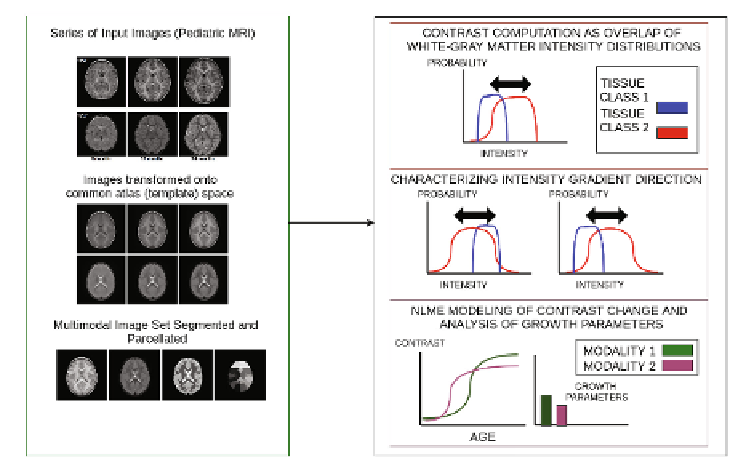Image Processing Reference
In-Depth Information
differences between contrast change trajectories of multiple modalities and have
the potential to deepen our understanding of neurodevelopmental processes.
2 Methodology
The proposed framework for joint multimodal modeling of appearance change in
MRI is outlined in Fig.
2
. The framework consists of four major components : (i)
Spatio-temporal image processing pipeline consisting of co-registration of entire
image data to a common coordinate space, segmentation of images into tissue
classes (gray, white matter, etc.) and parcellation of the brain into major cortical
regions; (ii) generation of white matter and gray matter intensity distributions
and quantification of regional contrast in terms of the Hellinger Distance (HD)
between these distributions; (iii) characterizing contrast direction using SIR and
adding a directional attribute to contrast using CONTDIR; and (iv) multivariate
NLME for joint modeling of multimodal appearance change.
Fig. 2.
Complete framework for image-processing (left) and statistical analysis of con-
trast (right)
2.1
Spatio-Temporal Image Processing Pipeline
A joint registration-segmentation pipeline which removes variability due to fac-
tors such as shape, structure, and volume is implemented such that appearance
changes alone remain to be studied. This pipeline consists of intra subject regis-
tration using non-rigid free form deformations [
11
] followed by inter subject regis-
tration using LDDMM (Large Deformation Diffeophomorphic Metric Mapping)

Search WWH ::

Custom Search